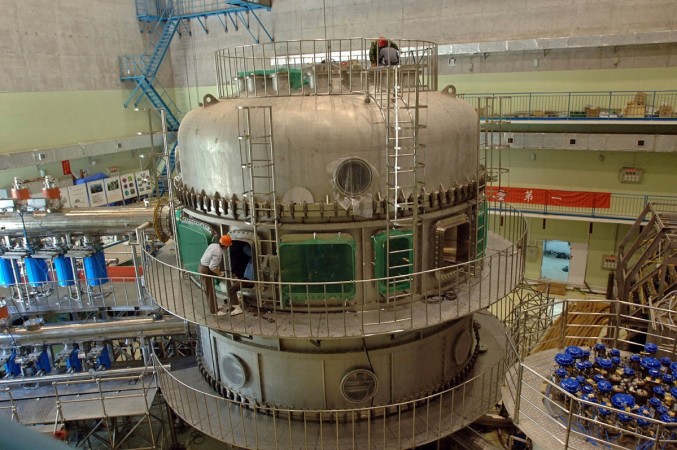China's nuclear fusion breakthrough produces 'artificial sun'

While the world is looking at renewable energy as a solution to its energy woes, nuclear fusion has always been considered an alternate. A nuclear fusion experiment conducted by the Hefei Institute of Physical Science of the Chinese Academy of Science has seen a breakthrough in this field, IANS reports.
Their Experimental Advanced Superconducting Tokamak (EAST) fusion device, fondly known as "artificial sun" successfully made a pulse plasma discharge, producing heat in excess of 50 million Kelvin (just under 50 million degrees Celsius). The device sustained this pulse for 102 seconds.
In contrast, the Sun's core temperature is about 15 million degrees Celsius, says Space.com
Different from nuclear fission, which involves the splitting of atoms — normally Uranium isotopes — nuclear fusion involves two or more atomic nuclei colliding at high speeds to create a new nucleus. In nuclear fusion, Hydrogen isotopes Deuerium (an isotope that has one proton and one neutron) and Trutium (an isotope that has one proton and two neutrons) are collided at high speeds to produce Helium. This also releases large amount of energy and the sun gets its energy from a similar reaction. A hydrogen bomb uses the energy produced by nuclear fission to trigger a fusion reaction.
"An artificial sun can provide limitless clean energy through controlled thermonuclear fusion," said Xu Jiannan, a researcher at the China Academy of Engineering Physics.
According to the World Nuclear Association, nuclear fusion required a large amount of energy as it's difficult to get the positively charged Hydrogen isotopes to come close enough to collide. However, at high temperatures, this is possible.
China's breakthrough puts it in the running with the European Union, USA, Russia and Japan that are considered to be front runners in fusion technology. Research is also underway in Brazil, Korea and Canada.
The International Thermonuclear Experimental Reactor (ITER) will be the world's largest fusion reactor, when its construction ends in 2019. The Business Standard reported last year that a team of Indian scientists in Gujarat is developing some key components integral to its functioning.
Source: http://www.ibtimes.co.in/chinas-nuclear-fusion-breakthrough-produces-artificial-sun-671042
Image Source: http://data1.ibtimes.co.in/cache-img-0-450/en/full/601839/1458199121_fusion-reactor.jpg
Vocabulary:
1. Fusion - noun The process or result of joining two or more things together to form a single entity.
2. Renewable - adj. (Of a natural resource or source of energy) not depleted when used.
3. Breakthrough - noun A sudden, dramatic, and important discovery or development.
4. Fondly - adv. With affection or liking.
5. Sustain - verb Cause to continue for an extended period or without interruption.
6. Collide - verb Come into conflict or opposition.
7. Front runner - noun The person, idea, or product that seems most likely to succeed.
8.. Underway - adj. If something is underway, it is happening now.
9. Component - adj. Constituting part of a larger whole constituent.
10. Integral - adj. Necessary to make a whole complete essential or fundamental.
Discussion:
1. People harvest sunlight for its solar energy. Do you think the man-made sun's power is safe for humans to use? Why do you think so?
2. Can artificial alternatives be the answer to the world's depleting renewable energy resources? Why?
3. What are the pros and cons of solar energy?
4. Is solar energy the best form or renewable energy? Why?
5. Should governments help the establishment of renewable energy production? Tell me your views about it.